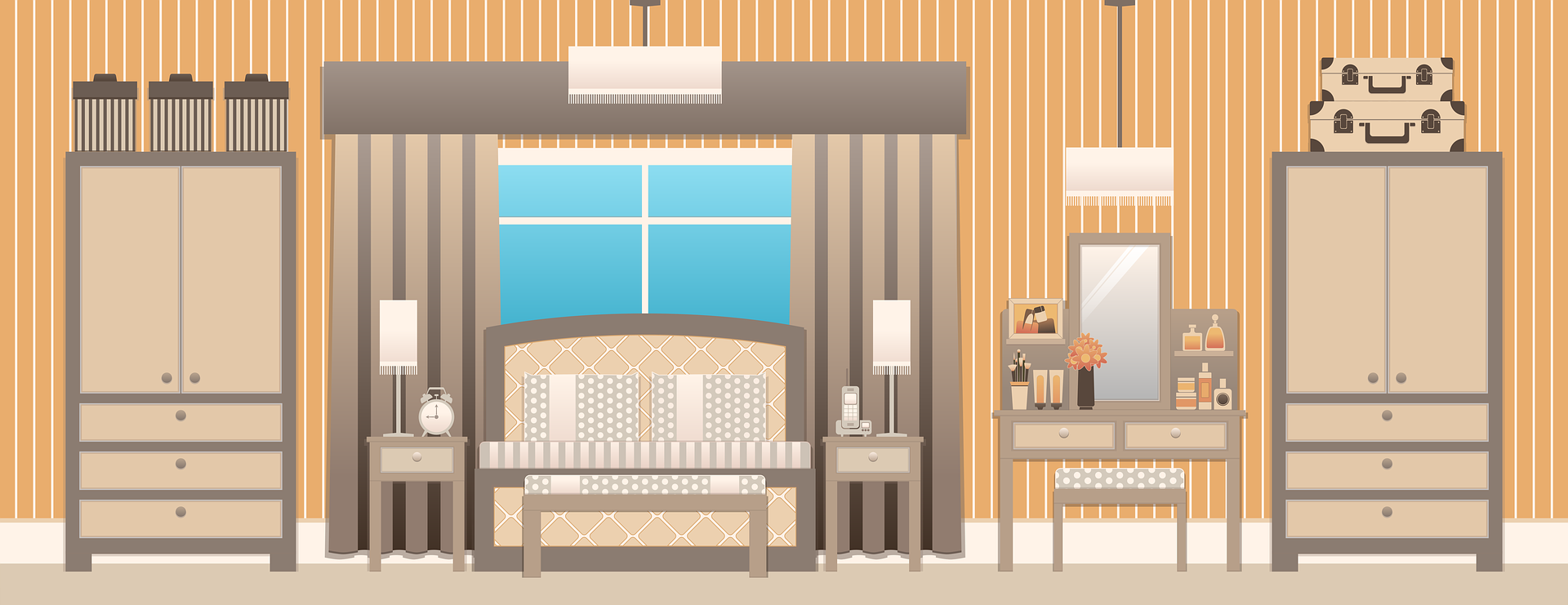After I decided to remain living on UNC-CH’s campus, there was no doubt that I was lonely. I had already been limiting the people I surrounded myself with because of the pandemic, and basically everyone on my floor had gone home. No matter how much of an introvert I am, I need social interaction. Or, at least, something to distract me and keep myself busy.
I needed help turning my emotions right side up.
It had been raining in Chapel Hill – no surprise there – and I stared at the one tapestry I hung up in my room the day I moved in. Then, I looked at the other blank wall, where my roommate would have decorated.
It hit me: I needed happy, calm, and COMPLETE surroundings because, at the moment, my dorm room was empty and had little to no decorations. This meant a masked trip to Target, along with inspiration from Pinterest.
For decades, psychology theorists have talked about the impact of interior design in homes have on emotional stability. The application of some simple interior design techniques will boost your mental well-being.
Here are some steps to transform your room or space:
- Think of Color
Studies show certain shades correspond with psychological responses; for example, green and blues encourage calmness and lower blood pressure. Deep reds are associated with passion and energy.
This theory is known as color psychology, where colors can affect feelings, thoughts, and actions. This design element has been proven to reduce anxiety and depression.
Dorm room walls are typically white and boring — try spicing it up with removable wallpaper from Dormify or Amazon.
- Lighting
Just like the previous element, lighting has shown to reduce anxiety and depression. Proper lighting can change the atmosphere of a room, changing it from plain to welcoming.
Natural lighting is one of the best, as health balance and emotional regulation are directly stimulated by daylight; however, sometimes it’s not possible.
Try some classic Christmas lights, moderately priced lamps from Target, or even change it up with neon signs and novelty lights.
- Organization
Room organization is just as important as decorations and lighting.
For me personally, a clean room makes for a clean and uncluttered mind. A messy space can cause stress and slowly drain your energy.
One study showed a positive effect on mood when spaces had the presence of overall organization and tidiness. Even if your room or space is small, you can always arrange furniture to your liking.
Since I have no roommate in my dorm room, I pushed the extra desk, mini fridge and microwave underneath the bed to create a kitchen area. These changes make the area seem a lot bigger than it actually is.
Try some room organizers for your closet, desk, etc!
- Plants are EVERYTHING
My dad is essentially responsible for this one. Before I never wanted to buy plants; I would always kill them and throw them away. This was until I realized the benefits and how they completely changed the look of a space.
Not only do plants make great decor, but it is also proven to encourage positive moods, creativity, productivity, and decrease anxiety.
If you are like me and find difficulty in taking care of plants, try getting some gorgeous ones that are low maintenance!
- Be in Love with Your Decor
You are not going to boost your well-being if you choose random decor pieces. If you are not 100% happy with your space, you will not experience the full benefits.
Try some virtual room designers!
—
Practicing self-care and maintaining a daily life structure is a priority for me. The power of interior design is overlooked in how influential it can be for those struggling with mental health.
It may seem like a stupid trend, but there’s a reason why there are about a million aesthetic mood boards on Pinterest.
The psychology of aesthetics is the “study of our interactions with artworks; our reactions to paintings, literature, poetry, music, movies, and performances; our experiences of beauty and ugliness, our preferences and dislikes; and our everyday perceptions of things in our world — of natural and built environments.”
In other words, aesthetic experiences, such as beautiful photos or interior design, cause positive emotions. Humans enjoy looking at things that are aesthetically pleasing to them because it brings joy.
It is important to design an aesthetic bedroom or space that is right for you. However, be sure to keep in mind how you want to feel when walking in, whether that is to feel calm or productive!
- Simple Tips to Go Green During the Pandemic - February 25, 2021
- New Englander Goes South - December 17, 2020
- The Power of Interior Design on Mental Health: How to Transform Your Space - November 26, 2020

